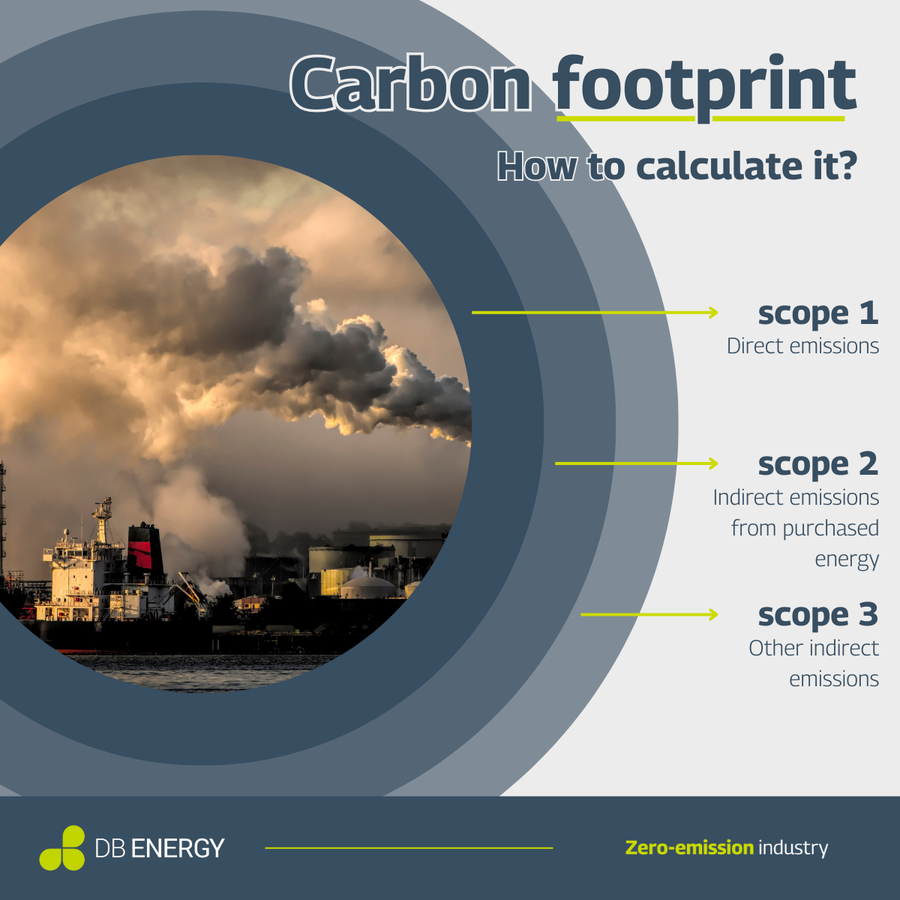Calculating your carbon footprint
Growing environmental awareness and increasingly stringent legal regulations have made calculating and reducing carbon footprints a key element of business strategies for industrial companies. For technical specialists, understanding the process of calculating carbon footprints can be crucial to effectively managing this challenge.

How to calculate and use carbon footprint data in industry: a practical guide for technical professionals.
What is a carbon footprint?
A carbon footprint is a measure of the amount of greenhouse gases emitted directly or indirectly during the production, delivery, and use of products or services. It is a key indicator in assessing the impact of human activity on climate change. By calculating the carbon footprint, it is possible to identify the main sources of emissions and develop strategies to reduce the negative impact on the natural environment.
What makes up a carbon footprint?
The carbon footprint consists of emissions throughout the value chain related to the production of purchased media, raw materials, services (e.g., electricity, heat, semi-finished products), transport of raw materials or semi-finished products, related to the customer's activities, distribution or sale, and waste disposal.

How to calculate your carbon footprint
The process of calculating a carbon footprint typically involves three main emission ranges, known as "scopes":
Scope 1
Direct emissions include greenhouse gas emissions produced directly by the company. These include, for example, fuel combustion in production processes and the emission of gases from chemical reactions or fermentation processes. Direct emissions are those that arise as a result of fuel combustion in its own stationary or mobile sources and emissions resulting from its own technological processes or escaping refrigerants.
Scope 2
Indirect emissions from purchased energy include greenhouse gas emissions resulting from the consumption of electricity, heat, process steam, or cooling purchased from outside and consumed by the customer.
Scope 3
Other indirect emissions include all other emissions associated with a company’s operations, related to a product, outside its boundaries. They arise throughout the value chain – including the production of raw materials or semi-finished products, waste management, transport, employee travel, and even the use of products by their end users. Scope 3 emissions make up an average of 78% of the total carbon footprint. While they are the most difficult to calculate, they hold hidden potential for financial savings and emission reductions.
Did you know that your Scope 3 is actually your supplier's Scope 1 and 2?
Scope 3 is a challenge, especially if we want to get real metrics that provide a starting point for zero-emission strategies. A key element in accurately calculating Scope 3 is having suppliers who collaborate and share valuable data.
Steps to calculate a company’s carbon footprint
1. Define the scope: before you start calculating your carbon footprint, decide which aspects of your business will be included. This could include emissions from manufacturing, transportation, materials used, energy consumption, waste, etc. Many companies choose a method called “cradle-to-gate” – this is much more precise and allows you to examine all measurable processes up to the point where the product leaves the factory. The second method is “cradle-to-grave” and involves calculating the carbon footprint over the entire life cycle of the product (often using averages). This estimate includes things that could happen to the product but may not. For this reason, it is less precise and is less often chosen by businesses.
2. Collect data: collect all necessary data on energy consumption, greenhouse gas emissions, fuel consumption, water consumption, waste volume, etc. Data can come from bills, invoices, measurement data, and company reports.
3. Convert data to emissions: convert data on energy, fuel, water, etc. consumption into greenhouse gas emissions. You can use emission calculators or available average emission factors for different types of fuel and energy.
4. Calculate your transport emissions: calculate your transport emissions, including emissions from company vehicles, freight transport, etc. You can use data such as kilometers driven, fuel used, and vehicle types.
5. Include external emissions: if your business uses external services, products, or materials, also include the emissions associated with those factors. This can include emissions associated with external supplies and services.
6. Add up all emissions: add up all emissions to get the total. Scope 1 and 2 emissions are usually easier to calculate. The main challenge is measuring Scope 3. The GHG Protocol has 15 emission categories – what makes up Scope 3?
Upstream:
- Purchased goods and products
- Capital goods
- Fuel- and energy-related activities
- Upstream transportation and distribution
- Waste generated in operations
- Business travel
- Employee commuting
- Upstream leased assets
Downstream:
- Downstream transportation and distribution
- Processing of sold products
- Use of sold products
- End-of-life treatment of sold products
- Downstream leased assets
- Franchises
- Investments
7. Prepare a report: prepare a report that details your calculated emissions, broken down into categories.
8. Identify areas with the greatest impact: as you analyze your report, identify the areas that have the greatest impact on your company’s carbon footprint. This will allow you to identify areas where you can focus your efforts to reduce emissions.
9. Implement reduction actions: develop an action plan to reduce your company’s carbon footprint. This could include investing in energy efficiency, changes to production processes, investing in renewable energy sources, or changes to transportation.
10. Monitor progress: monitor your greenhouse gas emissions regularly to track your progress in reducing your carbon footprint and adjust your reduction strategy as needed.
Why Calculate Your Carbon Footprint?
The increasing concentration of greenhouse gases in the atmosphere is a direct cause of climate change. It is currently the greatest threat to the modern world. By calculating the carbon footprint, you are taking a step towards introducing positive changes in the company. They will translate into a number of benefits that can be divided into three main categories: environmental (minimizing the negative impact of the company's activities on the environment), economic (optimizing the production process, reducing the current costs of production), and image.
- Social awareness and responsibility: calculating a carbon footprint allows companies to understand and monitor their greenhouse gas emissions, which helps build a positive corporate image and increase social involvement.
- Financial savings: identifying the main sources of emissions can help identify areas where energy and operating costs can be saved.
- Regulatory compliance: implementing carbon footprint calculations allows companies to comply with increasingly stringent greenhouse gas regulations.
- Market Competitiveness: a company that actively takes steps to reduce its carbon footprint can gain a competitive advantage in the market, especially in the context of increasing environmental awareness among consumers.
As you can see, calculating the carbon footprint is a key step for industrial companies striving for sustainable development and reducing negative impact on the natural environment. For technical professionals, understanding the process of calculating the carbon footprint and identifying areas for emission reduction is an essential part of their role in the company. Taking a proactive approach to reducing emissions can bring both ecological and economic benefits to the company.